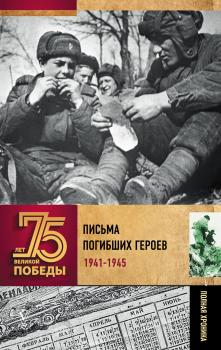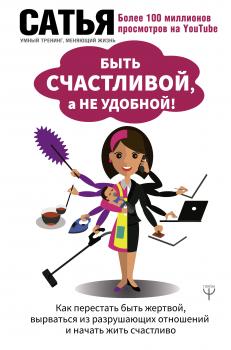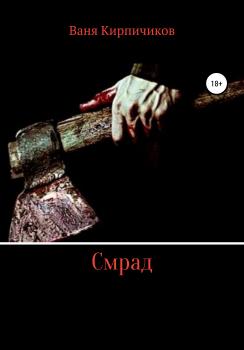MREADZ.COM - много разных книг на любой вкус
Скачивание или чтение онлайн электронных книг.Kunstniku elu
Kunstnikust kirjaniku Toomas Vindi kogumik „Kunstniku elu“ sisaldab jutte ja mälestusi, mille ainestik tuleneb nii meie igapäevasest elust kui ka kunstimaailmast, mida autor ise läbilõhki tunneb.„Kunstniku elu“ on Toomas Vindi kahekümne esimene raamat.Viimaks, kui olin lõplikult otsustanud häirivatest pükstest lahti saada, need ihuvärvi pealt maha pesta, helises uksekell ja ateljeesse vajus Kunstnike Liidu sekretäri Heinz Valgu juhtimisel salkkond prantslasi. See oli väliskülalistele läbiviidav nomenklatuurne meelelahutusprogramm – näidata, kui tublilt ehtsad ja elusad nõukogude kunstnikud tööd teevad. Meie ateljee asus Kunstihoones ja seetõttu olime taolisteks üritusteks kerge saak. Prantslased uurisid esmalt huviga, kuidas nõukogude kunstnikud välja näevad, seejärel uudistasid, mida nad teevad ning vahtisid nii lähedalt kui ka kaugelt mu valmivat maali.Ootamatult ütles Aili: „Kuule, sellele figuurile teksad ikka ei istu, äkki sa võtad need tal jalast.“„Paistab, et sul on tuline õigus,“ tähendasin ma kukalt kratsides, tegin lapi tärpentiniseks ja pühkisin hommikul maalitud teksad maha. See võttis aega mõnikümmend sekundit, misjärel kõlas ateljees üksmeelne ahhetus. Maali esiplaanil seisis nüüd palja ümariku tagumikuga naine.Katkend raamatus sisalduvast autobiograafilisest novellist „Näitus Pariisis. Montparnasse’il.“
Mõned kummalised naised
Te viibite kunstinäitusel, näete seal eksponeeritud aktimaale ning mõtlete, et oleks õige põnev teada maalidel kujutatud naistest nii üht kui ka teist. Raamatus „Mõned kummalised naised“ pakub kunstnik ja kirjanik Toomas Vint teile sellise erakordse võimaluse. 2014. aasta kevadel Haus Galeriis eksponeeritud aktimaalid hakkavad raamatus kõnelema ja iga naine jutustabki teile oma meeliköitva loo.Raamat sisaldab 16 juttu ning 16 värvireproduktsiooni Toomas Vindi maalidest.
Тихие омуты
«… После фильма „Забытая мелодия для флейты“ наши пути с Эмилем разошлись. Почти восемь лет мы не работали вместе. Причем разошлись мы не из-за какого-то конфликта или ссоры. Разошлись мы, пожалуй, из-за того, что наши творческие интересы стали не совпадать. Кстати, я предложил Эмилю принять участие в работе над «Небесами обетованными», но этот материал его не заинтересовал. Эмиль отказался. Он в свою очередь предлагал мне свои проекты, но они не заинтересовали меня. Однако это никак не повлияло на наши личные отношения. А когда осенью 1997 года мне пришел в голову сюжет новой комедии о любви, то я сразу же подумал: – Это нам надо сочинять вместе с Эмилем. Эмиль принял мое предложение с радостью, и мы стали писать «Тихие омуты». Оба волновались, как пойдет наша работа после столь долгого перерыва. Но, казалось, разлуки не было, как будто мы лишь вчера кончили нашу последнюю вещь. Почти полгода трудились мы над сценарием, сделали несколько вариантов. В апреле 1998 года сценарий был готов. …»
Магнитный двигатель для космоса
Представлено конструктивное решение по построению космического корабля, движущегося с опорой на электромагнитные поля Солнечной системы и Галактики с ускорением. Проведен расчет необходимой силы тока по контуру и величины заряда на полезной поверхности объекта для получения ускорения в 1g в произвольном направлении в пространстве. Представлена модифицированная конструкция магнитного двигателя для получения ускорения 0.05g в произвольном направлении в открытом космосе при приемлемой силе тока.
История одного убийства
«За окнами караульного помещения бушевал резкий, порывистый ветер, потрясая крышу ветхого здания и нагоняя скучную, зевотную тоску. В самой караулке, у деревянного крашеного стола, кроме разводящего, сидели еще двое: рядовой Банников и ефрейтор Цапля. Разводящий, младший унтер-офицер, сумрачный, всегда печальный человек, лениво перелистывал устав строевой службы, время от времени кусая краюху ржаного хлеба, лежавшую на столе. Ему смертельно хотелось спать, но он пересиливал себя и притворялся погруженным в изучение воинской премудрости. К тому же минут через двадцать надо было вести смену. А кроме этого, он не решался вздремнуть из боязни караульного офицера, который каждую минуту мог заглянуть на пост и сделать ему, разводящему, строгий выговор, а то и посадить под арест…»
Письма погибших героев
Лист бумаги, сложенный треугольником. Почтовая открытка. Самодельный конверт. Иногда просто комсомольский билет, сигаретная пачка или обрывок бумаги. На них были письма с фронта, строчки дневников, обращения, записки… Все они написаны перед боем, под артиллерийским обстрелом, в окопе, за столом в землянке, на стене тюремной камеры. И не важно, чем они написаны – ручкой, карандашом, гвоздем, обломком кирпича… Они написаны сердцем человека, понимающего, что ему суждено погибнуть и что это послание станет для него последним… Читая эту книгу, видишь страшные картины Великой Отечественной войны. Глаза затуманивают слезы, но одновременно возникает чувство восхищения героизмом и стойкостью людей пред лицом смерти, людей, не жалевших себя ради Победы своей родины.
Быть счастливой, а не удобной! Как перестать быть жертвой, вырваться из разрушающих отношений и начать жить счастливо
Говорят, что женщина должна заслужить любовь и счастье! Сотни книг учат, как быть идеальной женой, мамой и хозяйкой. И только одна скажет правду: удобная женщина никогда не будет счастливой. Это книга знаменитого психолога – Сатьи. Нас с детства учат, что эгоизм – это плохо, что желания окружающих должны быть на первом месте, а жить надо «для совести, а не для радости». Именно эти истины не дают женщине следовать ее истинным желаниям, раскрывать женскую сущность. Читая книгу, вы сможете понять, что же хотите на самом деле, научитесь слушать свое сердце и следовать ему, а не мнению окружающих, потренируетесь говорить «нет» и избавитесь от комплекса «жертвы».
Смрад
Мистическое представление души. Попытка перенести материальное на духовное. Абсурд человеческого существования. Невозможность познать мир.
Элементарно о методах изучения языка. Конспективное изложение
Предложенное читателю пособие представляет собой сжатое, конспективное изложение основных методов и методик лингвистического исследования. Данное пособие может использоваться как для первоначального ознакомления, так и для беглого повторения основных тем указанных разделов. Может быть полезным студентам учебных заведений различного уровня, а также для самообразования.









